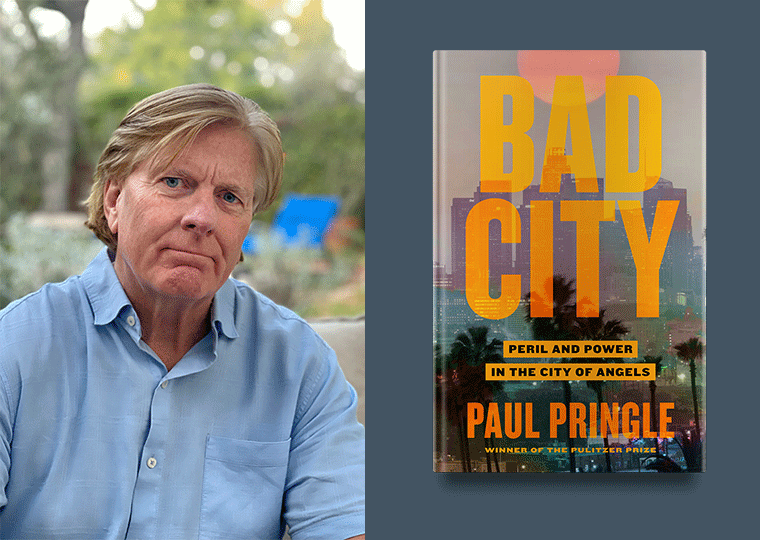Pulitzer Prize–winning journalist Paul Pringle’s Bad City: Peril and Power in the City of Angels is a nonfiction thriller about corruption and betrayal radiating across Los Angeles from one of the region’s most powerful institutions. Here, Pringle shares the struggles and triumphs he and his colleagues experienced while exposing these shocking scandals.
In 2016, you started investigating a drug overdose connected to University of Southern California’s Keck School of Medicine Dean Dr. Carmen Puliafito. That tip led you to unearth massive coverups within the university, one of which led to your Pulitzer Prize win in 2019. When did you realize the initial story went deeper than it appeared?
It became clear to me fairly early in my reporting that the story went much deeper than an embarrassing episode involving Puliafito and drugs. That was because of the walls of silence I encountered at Pasadena City Hall and USC. The story thereafter became as much about institutional corruption as the overdose itself. Despite overwhelming evidence of his criminal conduct, and despite the harm Puliafito was inflicting on desperate young people, the Pasadena police quietly let him off the hook (as the district attorney would later) and thwarted my initial inquiries. The police chief refused to speak to me, and I was denied access to records that are public under the law. Similarly, no one in authority at USC would grant me an interview or even acknowledge my requests for information. Instead, they sought to impede my reporting through their connections at the Los Angeles Times. My colleagues and I would learn that the school’s administrators were engaged in the same type of coverup to bury the monstrous actions of George Tyndall, the campus gynecologist accused of sexually assaulting his student patients.
What was the most difficult challenge you faced in investigating the crimes of these two prominent doctors, Dr. Puliafito and gynecologist Dr. George Tyndall?
Unfortunately, the biggest obstacle in the Puliafito reporting was the leadership of my own newsroom. The top editors killed my initial story and then delayed and diluted the piece that finally was published. In the Tyndall matter, the major challenge my colleagues and I faced was persuading his victims and the brave USC employees who tried to stop him to speak to us, given their legitimate fears of retaliation.
Why did you decide to turn your experiences of reporting on these pieces into a book? And how did it feel to tell the full story in hindsight?
So much of the story could only be told on the broader canvas of a book. That was especially true in terms of not just my personal experiences but, more importantly, those of the victims of the two doctors and the whistleblowers who risked all to expose them. It was very gratifying to tell their stories in greater detail. And I believed it important to reveal the trouble my colleagues and I had in getting the Puliafito story published.
Bad City takes place largely in Los Angeles, but the alleged crimes you uncovered speak to a nationwide reckoning over men in positions of power harming young women. What lessons would you like readers to take away from the events that unfold in the book?
One lesson is difficult and enduring: You can’t always count on the institutions charged with protecting you to do their job, and sometimes their leaders will even be complicit in the harm. But that doesn’t mean there aren’t other ways of stopping these men and dragging them and those who shield them into the light — starting with investigative journalism. That’s the uplifting lesson in this story: When all else failed, the whistleblowers and their supporters turned to journalists for help. They reached out to us, we convinced them they could trust us, they armed us with the truth — and, together, we brought the bad guys down.
What will Bad City reveal to readers about the job of an investigative journalist?
I hope it will show how devoted we are to weeding out the type of corruption that injures innocent and defenseless people, and the huge degree to which our work depends on earning the trust of folks who speak to us at their own peril.
You worked with some incredible young journalists on this story. How have they impacted your view of the future of journalism?
My young colleagues put their jobs and careers on the line to do the right thing. They brought honor to their profession, and they deepened my belief that fearless investigative journalism has a bright future, particularly as a means of obtaining justice when justice is otherwise denied.
